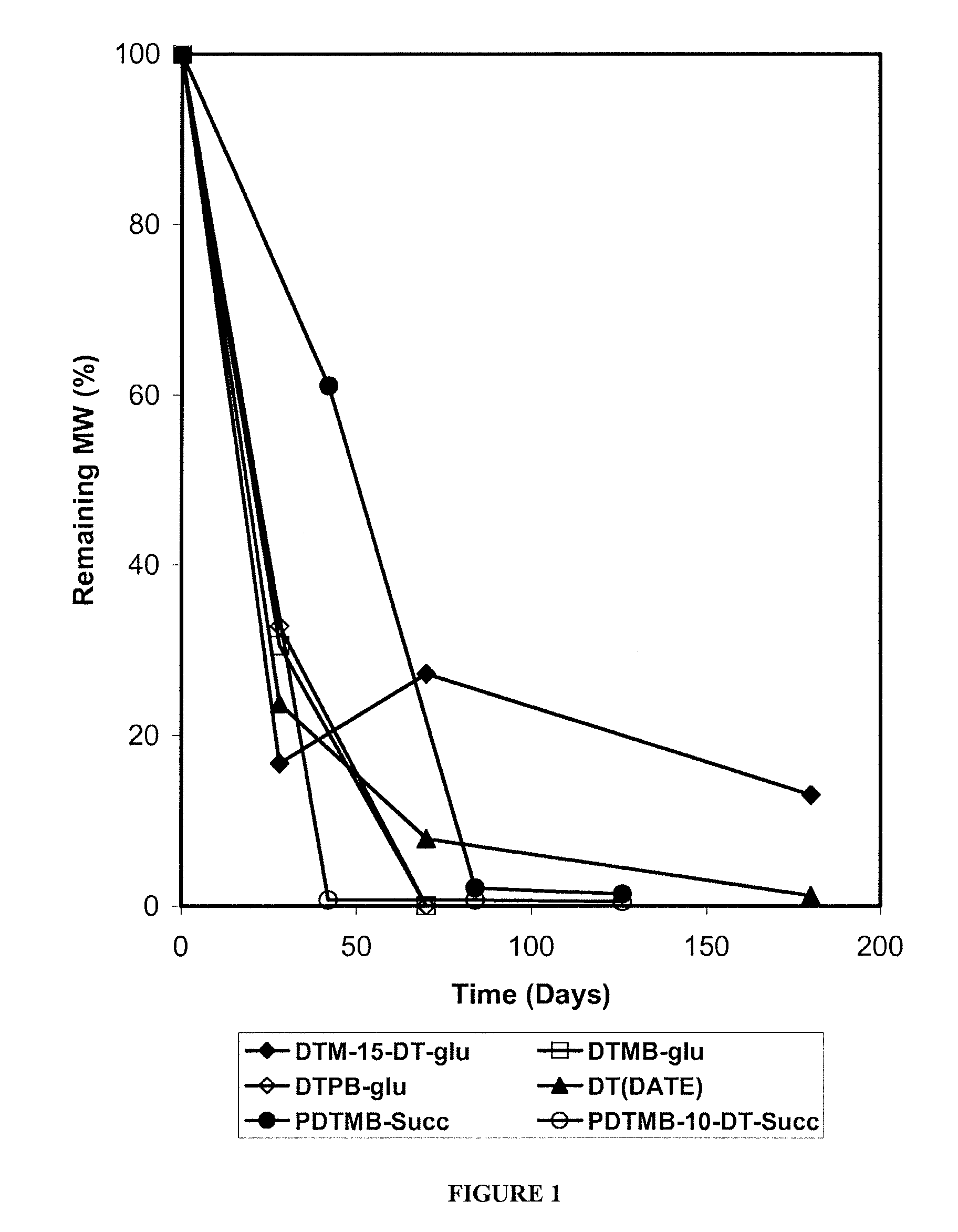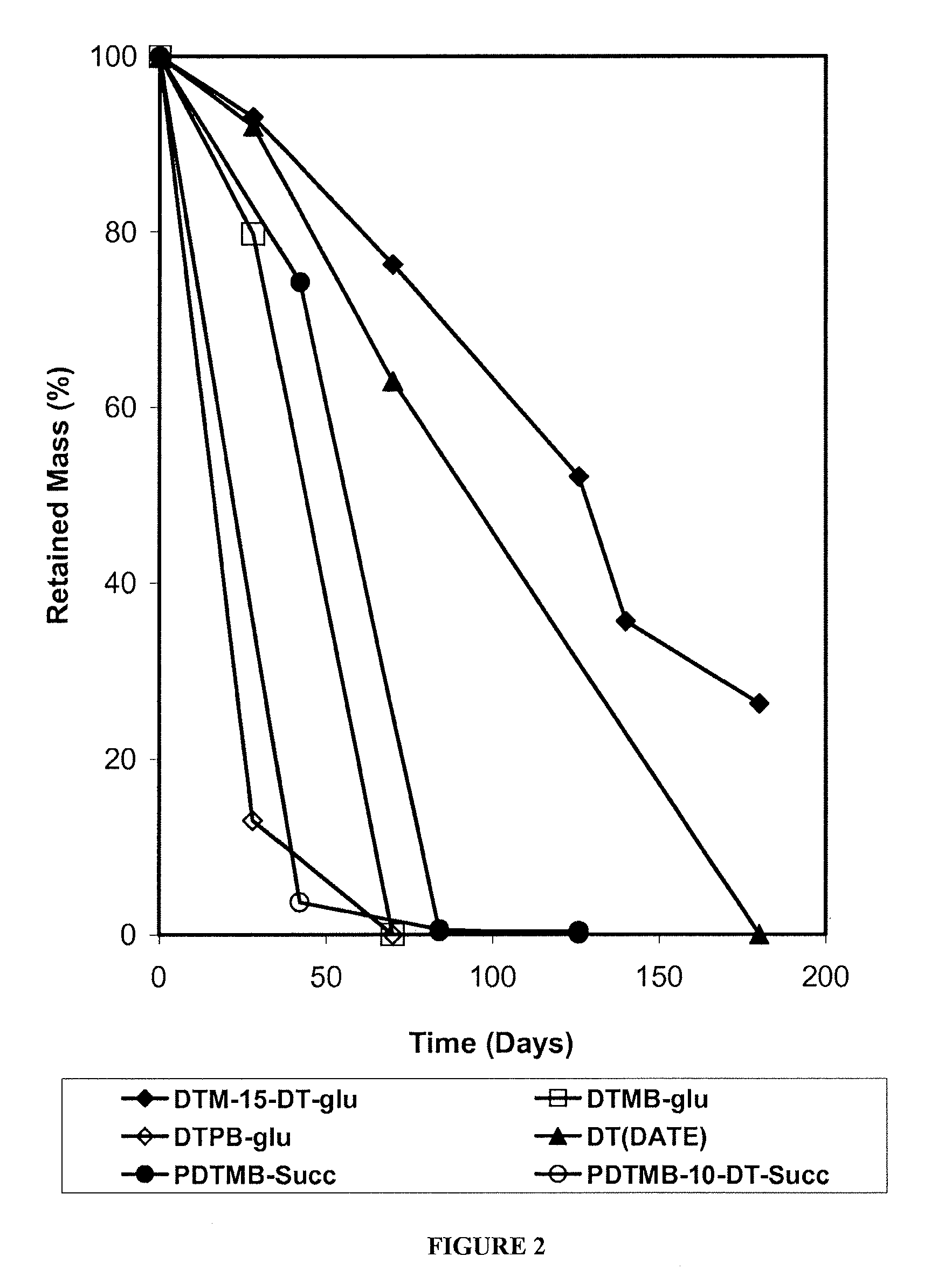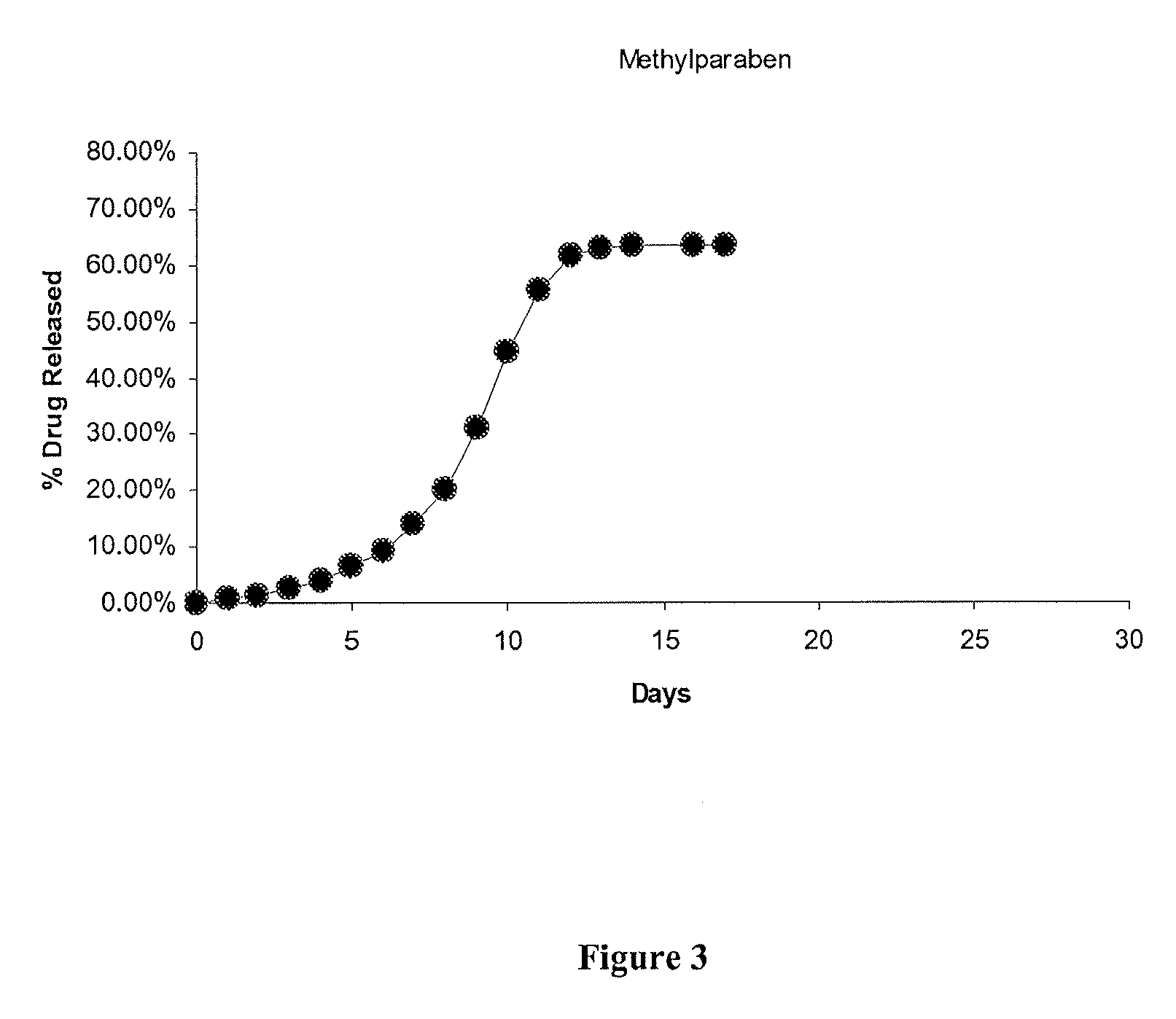Phenyl Ester Side Chains to Increase Polymer Resorptivity
a technology of phenyl ester and side chains, which is applied in the direction of drug compositions, cardiovascular disorders, metabolic disorders, etc., can solve problems such as manufacturing and compatibility challenges
- Summary
- Abstract
- Description
- Claims
- Application Information
AI Technical Summary
Benefits of technology
Problems solved by technology
Method used
Image
Examples
example 1
Synthesis of Poly(desaminotyrsosoyl tyrosine methylparaben ester glutarate)
[0264]A. Preparation of poly(DTBn-glutarate)
[0265]DTBn (0.5 mol, 209.66 g), glutaric acid (0.5 mol, 66.06 g), DPTS (0.2 mol, 58.84 g) were placed in a 3 L flask equipped with an overhead stirrer and condenser. Methylene chloride (1.2 L) was added to the flask and the contents stirred until all the solids were dispersed. DIPC (1.5 mol, 189.3 g, 234.2 mL) was added and stirring continued for 20-22 h by which time reaction mixture was viscous. The polymer was isolated by repeated precipitations from methylene chloride and isopropanol (IPA). The solid polymer was transferred to a polypropylene tray and left to dry in the hood overnight, transferred to a vacuum oven at 50° C. and dried to constant weight. The yield of poly(DTBn-glutarate) was 203 g (76%). The polymer had a molecular weight of 100 kDa and a Tg of 66° C.
B. Removal of Pendant Benzyl Esters to Produce poly(DT-glutarate)
[0266]A 5% solution of poly(DTBn...
example 2
Synthesis of Poly(desaminotyrososyl tyrosine propylparaben ester glutarate)
[0268]The polymer poly(desaminotyrsosyl tyrosine propylparaben ester glutarate), i.e., poly(DTPB glutarate), was synthesized as described in Example 1 except that in step C, phydroxy propyl benzoate (0.225 mol, 40.5 g) was added to the solution of poly(DT-glutarate) in DMF. The remainder of the polymer work up remained the same and yielded poly(DTPBglutarate) 21 g (61%). The polymer had molecular weight of 70 kDa and a Tg of 66° C.
example 3
Sythesis of Poly(desaminotyrosyl tyrosine methylparaben ester succinate)
[0269]The polymer poly(desaminotyrsosyl tyrosine methylparaben ester succinate), i.e., poly(DTMB succinate), was synthesized as described in Example 1 except that in step C, glutaric acid was replaced with succinic acid. The remainder of the polymer work up and synthesis generally remained the same and yielded poly(DTMB-succinate) 18 g (54%). The polymer had a molecular weight of 40 kDa and a Tg of 76° C.
PUM
| Property | Measurement | Unit |
|---|---|---|
| biocompatible | aaaaa | aaaaa |
| carboxylic acid | aaaaa | aaaaa |
| resorbable | aaaaa | aaaaa |
Abstract
Description
Claims
Application Information
 Login to View More
Login to View More - R&D
- Intellectual Property
- Life Sciences
- Materials
- Tech Scout
- Unparalleled Data Quality
- Higher Quality Content
- 60% Fewer Hallucinations
Browse by: Latest US Patents, China's latest patents, Technical Efficacy Thesaurus, Application Domain, Technology Topic, Popular Technical Reports.
© 2025 PatSnap. All rights reserved.Legal|Privacy policy|Modern Slavery Act Transparency Statement|Sitemap|About US| Contact US: help@patsnap.com



